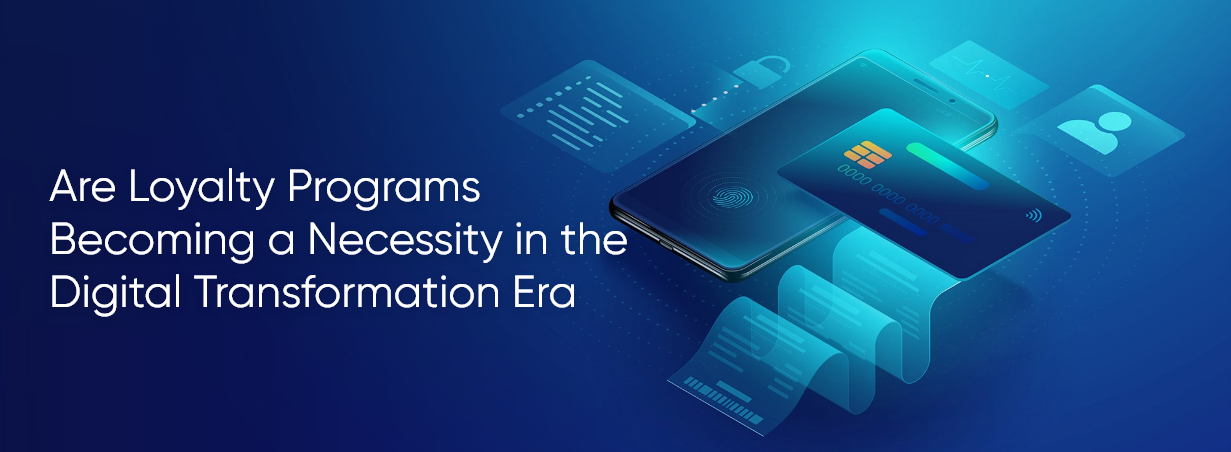Are Loyalty Programs Becoming a Necessity in the Digital Transformation Era?
- Posted on November 10, 2022 by Robert
- Reading time about 5 minutes
As we move towards digital transformation, businesses are evolving to meet ever-changing customer needs with robust digital solutions aligned with the latest technologies and innovations. With increasing competition in the business world, loyalty programs are becoming essential to draw the attention of customers with relevant rewards & retain them for a long time.
Research by IDC says that direct investment in digital transformation is about to reach $7 trillion with a CAGR of 18% from 2020 to 2023. However, in 2019, only 44% of companies were fully prepared for potential digital disruption as per a study by Forbes. This means the stats have increased drastically after the pandemic. With more than 70% of customer engagement driven by smart systems, businesses are shifting focus to customer retention & acquisition as well. Let’s find out how an effective Customer Loyalty Software Solution can play a huge role in improving business goals.
Importance of Loyalty Programs for Digital Transformation
For any digital transformation to fully succeed, businesses need to analyze data and see what it means for their business. What kind of data you are collecting, where will this data be used and how will it help to deliver desired customer experience?
However, with data privacy laws becoming stricter than ever, businesses need a way to help them collect and use customer data effectively. That is where exactly loyalty programs come into action. Loyalty management software is one of the most preferred ways to collect first-party data while sticking to global legal and ethical data protection standards & helping businesses boost customer engagement rates & loyalty.
With a built-in consent mechanism, customer loyalty strategies help brands to collect first-party data from customers easily. This works in a two-way value exchange where customers willingly share their share in return for more relevant and beneficial experiences. Collecting first-party data is one of the main advantages of using a loyalty program, as data can help to design marketing and business strategies that are perfectly suited to customers’ preferences.
Ways to Collect Customer Data through Loyalty Strategies
Collecting data is not a one-time process, which means brands must find out what works best for them. With progressive profiling, brands can build an extensive profile of their customers by collecting data from them regularly and ensuring that the quality of data is up-to-date and relevant.
Every data exchange between the brand and its customers increases the relationship value among the parties. Brands get the benefits of repeat purchases, consistent transactions, better engagement, and access to zero and first-party data. On the other hand, customers get individualized experiences, privileges of special status, relevant rewards, and exclusive benefits.
Here are some of the ways to collect zero and first-party data through loyalty campaigns that brands make use of to build a stronger data record for every customer-
– Collect Deep Member Data Through Loyalty Program
To make use of a brand’s loyalty program, customers need to sign up by submitting the basic information required to create a member profile. This enables brands to collect basic information about customers such as name, location, customer address, email id, etc.
With time, loyalty program members will do many activities giving brands a chance to get customer insights like available points, redeemed points, lifetime points, loyalty tier status, last transaction activity, & point expiration date, and customers’ preferred way to earn & redeem points.
– Collect Customer Data from Interactions
One of the best things about loyalty strategies is that it helps brands to enrich the customer record data by analyzing their information related to purchases.
These are customer purchase history, preferred engagement channels, history of cross-brand purchases, the location where the purchase was made, campaign participation rate, number of events the customer has taken part actively that was organized by the brand, number of referrals that customer brought to the business, number of social media posts that the customer has made for the brand, brand service reviews & ratings, comments posted in rating community and images the customer has uploaded for and about the brand.
– Collect Data on Customer Attributes
Another effective way that enables brands to collect customer data is through insights into customer attributes. These types of data help brands to build better business strategies that are specially designed to attract customers’ attention and make them appealing to customers.
Such information includes product style preferences, most purchased category, lifestyle and travel preferences, family member and friends’ names, etc. These loyalty strategies will help brands to get an overview of customers’ lifestyles and product preferences.
Final Takeaways
After going through the blog, we know the importance of loyalty programs in helping businesses know more about their customers and create personalized experiences. However, a well-planned strategy is needed to build a program that can maximize the scope & unleash the true potential of loyalty marketing, which is possible only through the help of a loyalty solution provider.
A reliable all-in-one Loyalty Management Software like Novus Loyalty is what you need to collect zero and first-party data from customers & build customized loyalty strategies that are the best fit for your business needs. With years of experience in providing successful loyalty solutions for businesses across various industry verticals, we focus on building program that embodies the brand’s identity helping them achieve both business and marketing goals. To know more about how you can boost your business through well-planned loyalty strategies, book a demo of Novus today.



